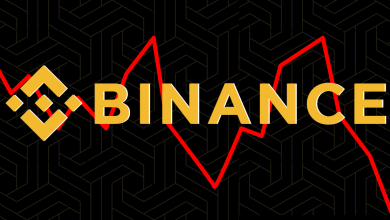What’s Driving Avalanche’s Meteoric Rise to the Top Ten?
For a long time, Ethereum was the platform that reigned supreme.
Although it’s still the #2 Cryptocurrency, it’s fair to say that 2021 has seen several contenders rise to compete with the original smart contract platform for development activity and investment.
Some of the biggest contenders have been in development for several years now – Cardano and Polkadot are the two most obvious examples – and are only now beginning to see the fruits of their multi-year roadmaps.
However, Avalanche is something of an exception.
It was relatively unheard of before 2020 when developer Ava Labs emerged wielding the academic clout of Cornell University researchers and the financial clout of an initial $60 million backing from high-profile VCs, including Galaxy Digital.
Despite a relatively late entrance, Avalanche made its mainnet debut in September last year, launching full smart contract and application functionality ahead of the competitors still working through their own roadmaps.
Over recent months, Avalanche’s rise throughout the crypto ranking tables has been meteoric, posting gains of close to 4,500% to reach its most recent all-time high in late November.
However, unlike its current table-neighbors SHIB and DOGE, the price increases have been driven out of real news, as Avalanche proves itself to be a legitimate rival to Ethereum in the burgeoning DeFi segment.
Why is Avalanche Attracting So Much Attention?
Why are people flocking to Avalanche? Well, Zhu Su, CEO of Singaporean hedge fund Three Arrows Capital most likely nailed it when he tweeted some undiluted criticism of Ethereum’s eye-watering transaction fees in late November.
Although he quickly backtracked on the most negative parts of his comment, he did state that
“I do know for the millions of new users coming, they should not be shamed for going to other ecosystems. Neither should devs be shamed for building on them.”
Prior to this, Zhu had already thrown his financial weight behind Avalanche, as Three Arrows Capital was one of the investors in an ecosystem development fund for Avalanche.
Called Blizzard, the fund is worth over $200 million and also gained investment from other major investors, including Polychain Capital and Dragonfly Capital.
It was the news about Blizzard that appears to have kicked off the AVA tokens epic November bull run.
Arguably, all of the crypto markets had a great start to November as Bitcoin rose to achieve its latest all-time high, around $69,000.
But AVA managed to defy the markets even once BTC moved into bearish territory, thanks to another injection of good news.
In mid-November, Emin Gun Sirer, founder of Avalanche, announced that Ava Labs had established a partnership with Big Four consulting firm Deloitte to improve the security, speed, and accuracy of Federal Emergency Management Agency funding.
Deloitte plans to use the Avalanche blockchain to build more efficient disaster relief platforms.
Community Funding
Avalanche’s month of good news didn’t stop there. Just as November closed, the news broke that Colony, a community-driven ecosystem accelerator, had raised a further $18.5 million in an investment round led by the Avalanche Foundation.
But the interesting element of this news story is that Colony isn’t a private VC fund closed to all but accredited investors.
It’s a decentralized fund powered by its own CLY token, meaning that anyone can participate.
Colony exists for four main purposes, all of which are aimed at furthering the Avalanche ecosystem.
It provides early-stage funding to projects and liquidity to DeFi protocols. It also participates in staking for the Avalanche platform and its various subnets, and finally, it purchases a basket of selected Avalanche-based project tokens to form an index.
Of course, each of these activities is designed to generate returns, either in the form of staking rewards, liquidity rewards, or appreciation of project tokens, which are funneled back to CLY holders.
CLY holders also have full governance rights to determine how Colony funds are distributed to various projects.
Decentralized Funding and Governance for the Long-term Focus
The Colony model is designed to address a central challenge of the regular VC funding model, which focuses on an exit strategy for a project rather than on the long-term future of the ecosystem.
By giving governance to a community that has long-standing growth in mind, Colony aims to turn the traditional model on its head.
In doing so, it introduces a new concept called “Ecosystem farming,” which addresses a key challenge for newcomer investors to the DeFi space – which projects to invest in? Many people feel they missed out on early DeFi token opportunities like Uniswap’s UNI or Sushiswap’s SUSHI.
But the risks of going too early can be severe, and it’s difficult for individual investors to discern which projects are a good longer-term bet.
Colony’s CLY token offers the opportunity to diversify across a wide portfolio of projects and strategies.
Furthermore, the decentralized governance process reduces the risk that any one person or small group of persons are deciding how funds are spent.
| Disclaimer: The article is intended for informational purposes only and should not be considered professional advice or a substitute for specific expertise. Coinpedia is not responsible, directly or indirectly for any losses incurred as a result or in connection with the utilization or dependence on any content, products, or services mentioned. Readers should do their research before taking any actions related to the company. Contact us if you have any issues or concerns. |













